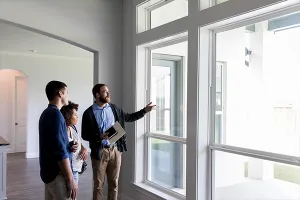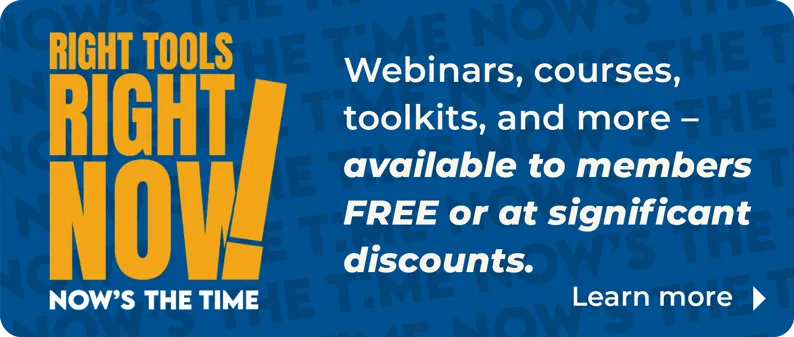Whether you’ve seen it in person or on the news, contentious public meetings about nearly any subject have become all too common. When the topic is housing development, particularly plans that will increase density or affordability, the atmosphere can quickly turn toxic. It’s particularly common in communities that are fearful of planning decisions because they have been discriminated against and adversely impacted by similar decisions in the past or anticipate negative out comes in the future.
One way to offset some of the toxicity that surrounds development is to find ways to include and empower community members, especially those who often feel left out of discussions and decisions, said Jennifer Raitt, executive director of the Northern Middlesex Council of Governments in Lowell, Mass.
“The traditional structure of holding public meetings to discuss planning issues is myopic because it disproportionately favors people who have the time and resources to devote to an evening meeting,” Raitt said. “This means that input at public meetings tends to come from wealthy white homeowners, so it’s important to find ways to supplement those meetings and reach people who are normally not heard and not seen.”

When Zoom meetings became common during the early days of the pandemic, some people thought they would be more inclusive, said Karin Brandt, Boston-based CEO and founder of coUrbanize, which provides tools and advisory services to support community engagement and planning.
“Zoom meetings brought out the same group as always because they took place in a small window of time,” Brandt said. “They had the same format as other public meetings, which can be intimidating and not inclusive.”
Too often, Brandt said, community outreach is a last step when it’s too late to make many changes to a project. That can lead to conflict.
It’s important to start community engagement as early as possible. It takes time to build trust.

“It’s important to start community engagement as early as possible because it takes time to build trust and it offers the opportunity to incorporate ideas from the community,” Brandt said.
Managing Conflict with the Four A’s
Ideally, planning decisions start with coalition building for mutually agreeable goals. That becomes more complex when only some community members can participate in the decision-making process. In addition, regardless of whether all stakeholders are involved, planning decisions often require conflict resolution. Raitt trains planners to manage conflict.

“The approach I designed starts with self-reflection on how you deal with conflict in your own life,” Raitt said. “Some people avoid conflict, while others are confrontational. It’s important for people to understand themselves and recognize that the limitations of conflict in a public setting may be different than how it can be handled at home.”
Raitt’s “Four A’s” framework, designed to help planners and developers handle contentious situations, focuses on anticipating, accepting, appreciating and acknowledging.
“Planners need to design and navigate a script for their communications with stakeholders and for public meetings based on where you are in a project and the potential triggers for conflict,” Raitt said. “Next, it’s important to accept that conflict is part of every situation. It’s critical to understand why someone holds their beliefs and accept the limitations of what you can do.”
In many cases, simply listening to people and their concerns can help diffuse conflict. “Planners need to appreciate all people who are participating in the process, even those who are disruptive,” Raitt said. “We have to make room for lots of people who come into the process, not just the people who are used to this and have the tools and resources to understand it.”
The fourth part of the framework is to acknowledge the history of a community.
“It’s important to familiarize yourself with the previous experiences in a community and recognize that it has not always been positive,” Raitt said. “Planners need to understand that everyone is different, so they need to be prepared for different personalities and to accept both negative and positive feedback.”
Listen and Build Relationships
City planners and developers should be aware that many people feel the government failed them in the past and that developers and planners were complicit, said Dr. Marisa Zapata, an associate professor of land-use planning at Portland State University and director of PSU’s Homelessness Research & Action Collaborative.
“It takes a lot to overcome that,” Zapata said. “You need to show people that you are going to listen to them. You can suggest what you think may help address issues such as the lack of affordable housing, of green space and of poorly designed neighborhoods. But you need to ask for their ideas, be clear about what you can do and that you’re committed to taking action.”
Planners and developers typically hold a fully integrated meeting and try to manage conflicting interests in one setting, Zapata said.
“Sometimes, it’s better to meet separately with different groups, such as unhoused people, affordable housing advocates and homeowners screaming about their property values,” Zapata said. “You can also hire an outside facilitator who can be thoughtful and understand the needs of different groups.”
Most important, Zapata said, is for developers and planners to be transparent about what they can and cannot do for a community, such as donate land or contribute to a nonprofit.
“Developers need to avoid trigger phrases such as ‘we need to make this pencil out’ or threats that investors will leave the state,” Zapata said. “People either don’t know what that means or it inflames their emotions. Those phrases indicate that the developer’s need to make money is more important than their own desire to live in a community.”
It’s also important to meet people where they are, such as in their apartment buildings, schools or nonprofit organizations that serve community members.
“The most successful meeting is the one no one knows you’re having,” said Veronica Davis, a Houston-based civil engineer and author of Inclusive Transportation: A Manifesto for Repairing Divided Communities. “Talk to people at the bus stop, at the grocery store — especially on the first day of the month if you’re working in a low-income-household community — or go to their place of worship, write something for the church newsletter.”
It takes time to build trust. “You have to do the home work, know who you’re talking to and what they care about,” Davis said. “It’s not just demographics. You need to know where people work, if they have kids and whether there are playgrounds in the area. If you’re doing a road project but you can’t rebuild the entire road, you can explain the benefit of what you’re doing for the community such as making it safer for kids to cross the street.”
To get people to attend meetings, Davis suggests paying for childcare and providing food. “Even if it’s not required, go directly to residents, not just to the owner on record of a building, with postcards, emails or social media posts to ask them what they would like to see in their community,” Zapata said.
Creating Harmony in a Divisive Time
Tension can be exacerbated when developers and planners ignore what happened in the past to communities and don’t respect current community members enough to include them early in the planning phases of redevelopment, Zapata said.
“It’s important to hire professional people with the cultural competence to deal with specific populations,” Davis said. “You need to get the right person to deliver the message. Get someone who understands the community, which isn’t always just someone who speaks Spanish or someone who’s Black. People see right through it when there are 10 white men, and they send the one Black woman to speak to a community group. You need to hire diverse people with leadership skills and empathy for others.”
When a contentious meeting is anticipated, Raitt recommends an advisory from the Institute for Local Government that helps differentiate freedom of speech and hate speech and offers practical suggestions about how to address disruption at board meetings.
“This is one of the most challenging issues of our time, to make a safe space where everyone can be heard,” Raitt said. “We want to be anti-racist, and we don’t want people to be faced with hostility because of their race, ability or language. But sometimes creating a place where everyone can be heard opens the door to making others feel unsafe.”
Recommendations of the Institute for Local Government include establishing a code of conduct, enforcing time limits on speakers, calling a recess, adjourning a meeting and potentially having law enforcement present.
REALTORS® Help Reunite Divided Communities
Extensive community engagement has been an important part of the redevelopment of the Inner Loop in Rochester, N.Y., a 1960s-era urban renewal project with a partially sunken highway that cut through historically Black and minority neighborhoods and demolished hundreds of homes and businesses. Today, the city of Rochester plans to remove the highway — a $100-million project — and redevelop the area around surface streets.

“We see this as an opportunity to create more housing through density,” said Jim Yockel, CEO of the Greater Rochester Association of REALTORS® (GRAR) in Roch ester, N.Y. “Conceptually, everyone agrees, but when it comes to the details, residents in the area now worry about traffic and more people.”
GRAR and others are working to build a coalition with broader voices from community members and nonprofit organizations to advocate for housing that will be more accessible, particularly for first-time buyers and generational renters.

“Typically, a developer makes a plan, then people come out to oppose it,” Yockel said. “No one comes in to talk about the longer-term view and about the people who want to rent or buy housing in the future. When plans are announced to the public about housing being built, we get calls from people who want to know how they can buy it. As REALTORS®, we can be a powerful voice for those people who want to live in a dense, walkable community with low-maintenance housing.”
Expanding Community Outreach to Overcome NIMBYism
Many city leaders recognize the value of a multipronged approach to community engagement to educate and involve a more diverse group of stakeholders for a more equitable planning process.
In Winston Salem, N.C., affordable housing developer McCormack Baron Salazar was hired with the help of a HUD Choice Neighborhood Initiative grant to redevelop public housing in a large section of the city. The developers hired coUrbanize to increase diverse community engagement.
“There was a big lack of trust in the community, a lot of misinformation and legitimate concerns about what this would mean,” Brandt said. “People had to be relocated and then brought back over several years, but they thought they were being permanently displaced, so we needed to explain the plans better and build trust.”
CoUrbanize adopts different strategies beyond just announcing a public meeting depending on the community where development is taking place, such as putting up signs with QR codes and questions to answer via text in urban areas with lots of pedestrian activity, and social media posts, postcards and outreach, including in different languages.
“In that community, everyone was active on their phones, so we engaged with them via text before and after meetings,” Brandt said. “We approached community groups to help people learn about the project, made information accessible in a variety of ways and held online forums where people can use their real names and ask questions instead of just presenting them with a static website.”
City leaders in Madison, Wis., adopted a “Housing Forward” plan in 2020 to remove barriers to create more affordable housing and increase the mix of housing options in the city such as allowing townhouses, duplexes and small apartments near public transit.
NIMBYism is often thought of as a group of organized people against all development, but more often opposition comes from local people who live near where change will happen, said Robert Procter, government affairs director with the REALTORS® Association of South Central Wisconsin.
“They don’t consider themselves NIMBYs and support housing reform in general, they’re just afraid of change in their own backyard,” Procter said. “They’re worried about traffic and other problems. But other people who will be impacted by planning decisions — future renters and future homebuyers — don’t have a voice at all. REALTORS® have a critical role to speak for them.”
REALTORS® sent information about Housing Forward plans to educate people about the economic benefits of reform, Procter said.
“Change is coming from an increase in our population and these reforms allow that change to be more positive and to provide housing for young families, students and people who want to age in place,” Procter said. “We’re set ting the stage to help people see that these reforms aren’t just about how they’ll impact individuals but about how to deal with a bigger problem: the housing shortage.”
Direct mail, digital advertising, educational websites and collecting petition signatures contribute to the expansion of discussion around housing and elevate the discussion to a broader level, Procter believes.
To combat NIMBYism, Davis suggests directly asking for specific reasons why someone opposes a plan.
“At one meeting I attended, someone didn’t like the design of a building that had apartments in the basement and thought they would sit empty, but the developer explained that they could work for someone who works a night shift and wanted a darker place in the daytime, and for someone with low vision,” Davis said. “Another time the issue was a driveway right next to a school. The developer then created a couple of different designs, including one with a gate for extra safety.”
Whether the issue is NIMBYism, fear of development or distrust of government officials, honest — and early — communication through diverse methods of outreach can diffuse many potentially contentious situations.










